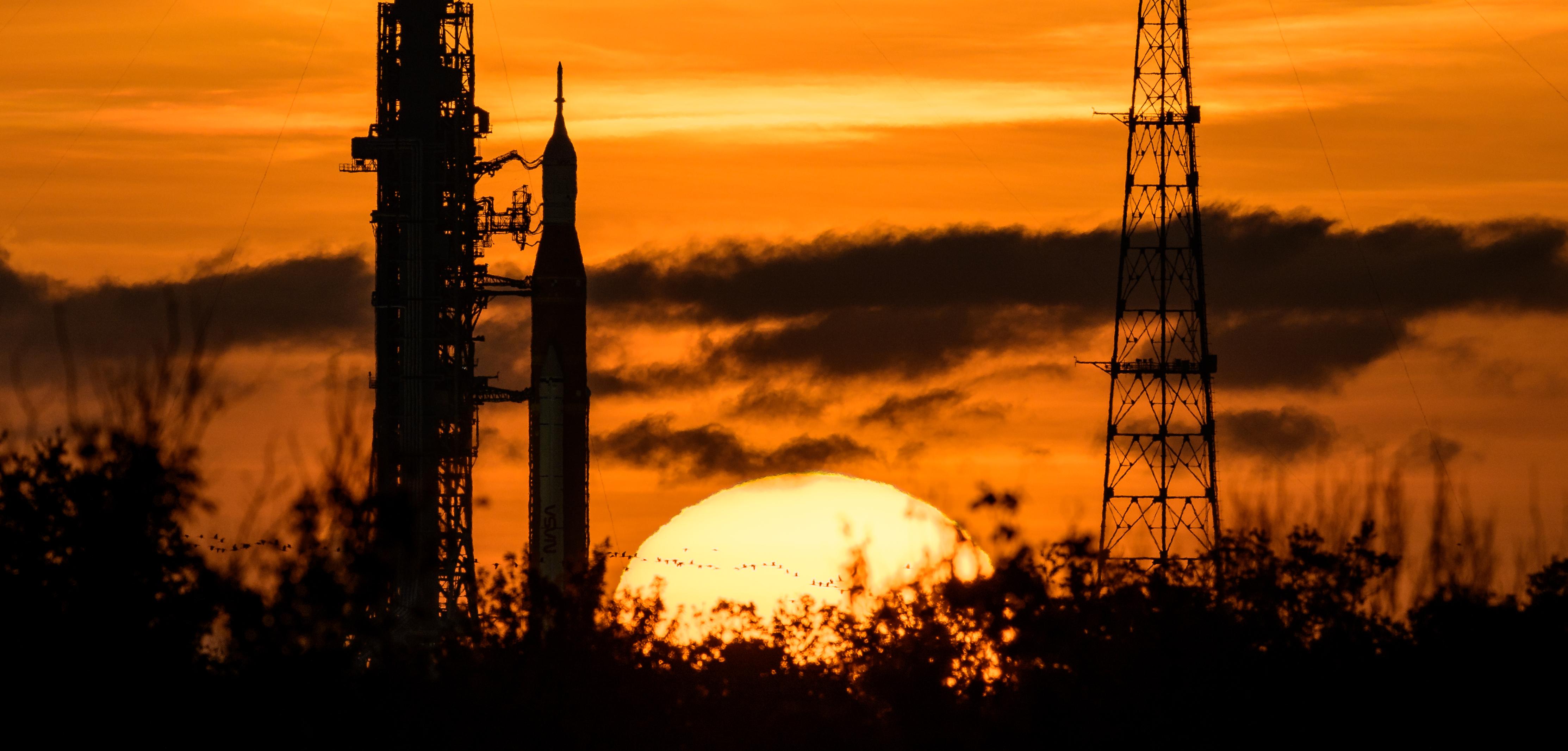
CAPE CANAVERAL -- NASA managers on Sept. 3 cleared the Kennedy Space Center launch team to proceed with fueling the two-stage Space Launch System (SLS) rocket with more than 750,000 gallons of liquid oxygen and liquid hydrogen propellants in preparation for a launch attempt between 2:17 p.m. and 4:17 p.m.
An issue with a faulty sensor that erroneously indicated one of the four Aerojet Rocketdyne RS-25 core stage engines was not at the correct temperature for ignition prompted NASA to scrub the first launch attempt on Aug. 29.
The launch team, which also wrestled with a leaking vent valve quick disconnect fitting and deteriorating weather conditions, ran out of time to troubleshoot the engine cooling issue during the countdown. Follow-up analysis showed a liquid hydrogen bleed line, used to thermally condition the RS-25s prior to ignition, was working properly, SLS Program Manager John Honeycutt and SLS Chief Engineer John Blevins told reporters on Sept. 1.
For the next launch attempt, engineers revised the countdown timeline to move up the engine-cooling procedure, which could affect the operation of the suspect sensor. The sensor is used to collect engineering data and does not feed into the automated flight software that checks engine conditions prior to ignition. If it is not operating properly during the Sept. 3 countdown, NASA will rely on other measurements to assure the engines are properly conditioned for flight.
The temperature of the engines is among 489 criteria that have to be met for a launch to occur, Mission Manager Mike Sarafin noted. "We've got a whole host of things that could cause us to not get off on any given day ... but we're going to show up, we're going to try and we're going to give it our best."
For its debut mission, the SLS is expected to send an uncrewed Orion capsule on a six-week shakedown cruise into a distant lunar orbit. The primary goal of the flight test, which kicks off NASA’s Artemis lunar exploration initiative, is to test the spacecraft's ablative heat shield during its 24,500 mph reentry into Earth’s atmosphere. if successful, NASA plans a crewed flight test for the second SLS flight, targeted for mid-2024.




